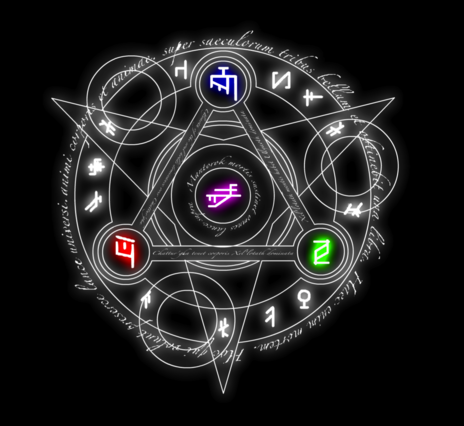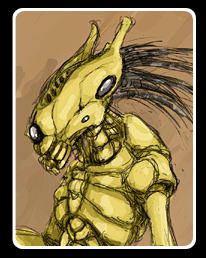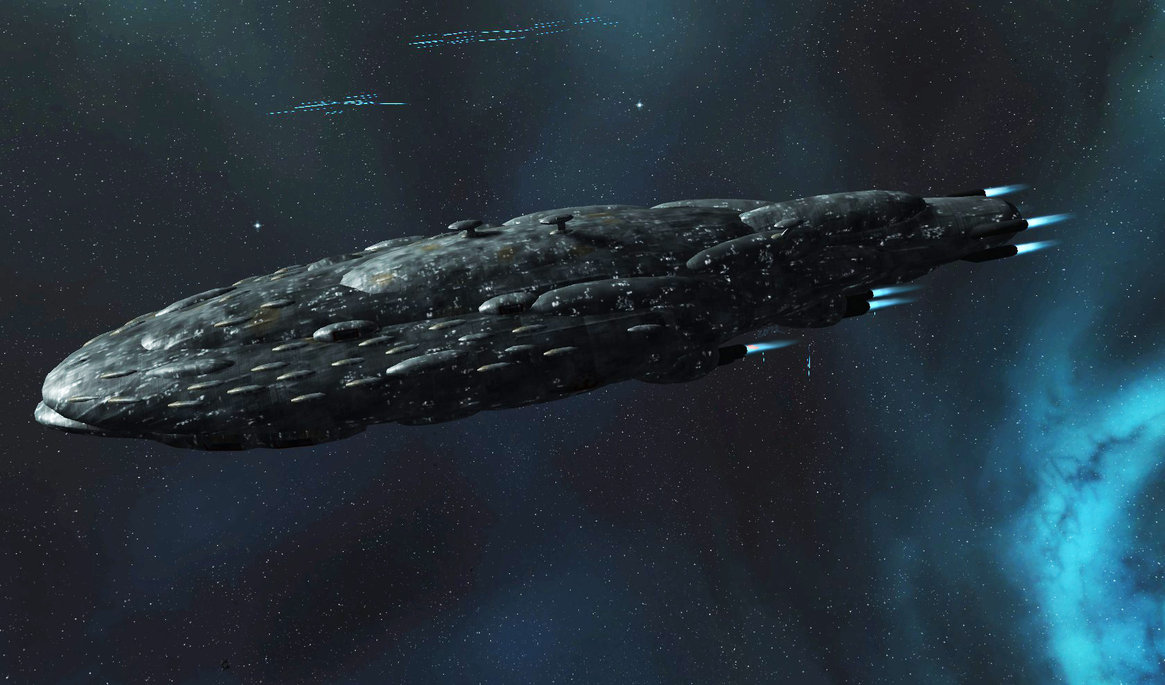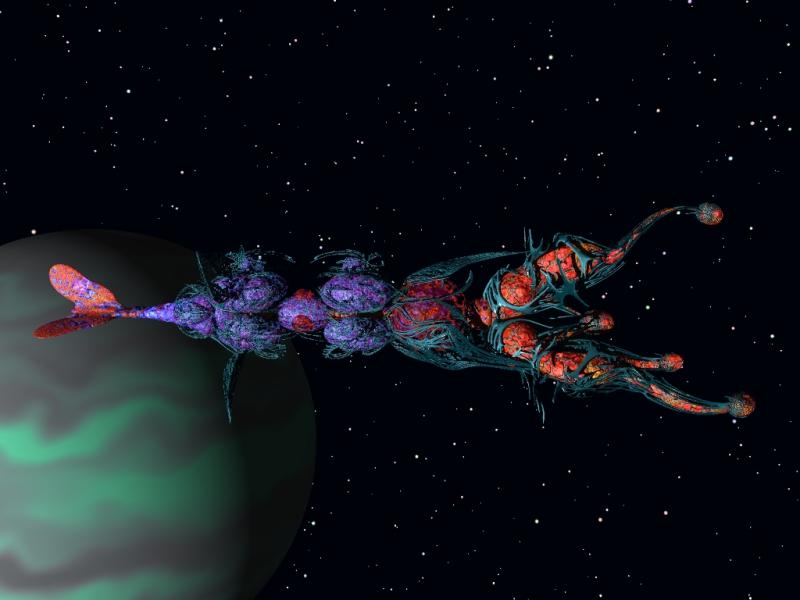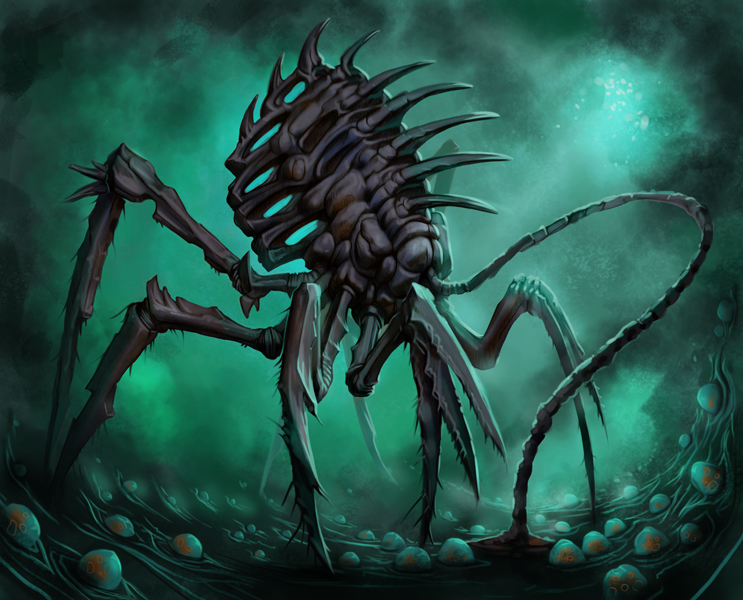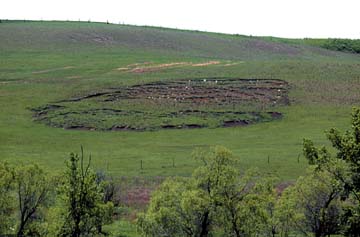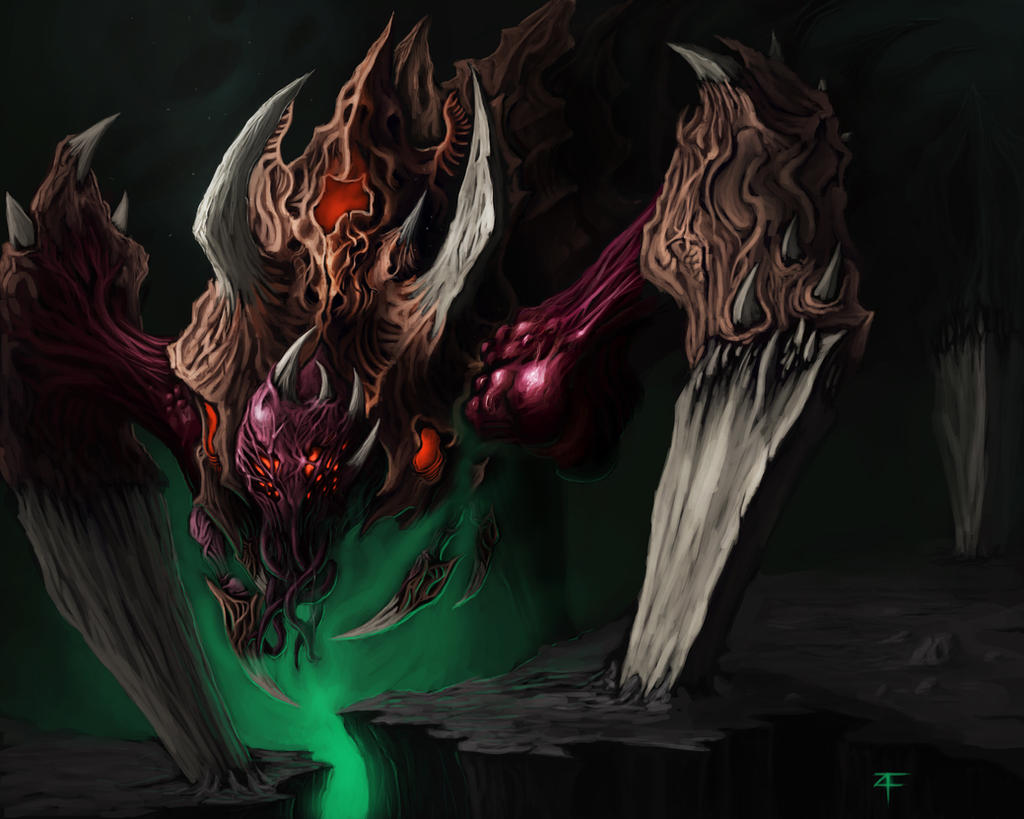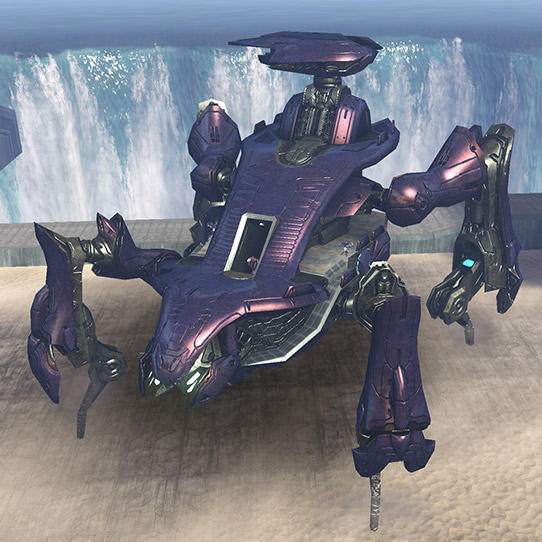Name of Nation: Ussuri Hetmanate
Type of Government: Feudal Monarchy
Description of Government:
Officially, the Hetman of the Ussuri Clan is an elected representative selected from the Tagma. The Tagma is a Council of Nobility, made up of the nobility of the Hetmanate. In reality however, it is little more than a rubber stamp parliament with little real power. It's members are required to swear personal oaths of loyalty, in return the Hetman recognizes their local rights to territory and largely stays out of the internal conflicts that outright open warfare between the nobles. As the largest and most powerful of the Clans, the Sirakov's have ruthlessly exploited these competing factions for the last century to ensure that they remain the strongest amongst the Clans.
Important Figures:
Hetman Ivan Sirakov:
Hetman of the Ussuri Confederacy and Co-Monarch of the Commonwealth, Ivan Sirakov was forged in the fires of nuclear warfare and vas responsible for waging a ruthless insurgency against the Imperium. With the collapse of the human government, Aleksander's Successor has been ruthlessly moving to conquer vis ancestors former General's and clansman. I
Banner / Flag:

History:
Following the establishment of the Shravian Federation, the immediate priority became the expansion of Shravian territories and more importantly the conquest of the Safavid and Survaek Empires. Millions of Shravian’s had been conscripted for the war, and millions more would die on foreign worlds, not as a result of direct combat, but instead the lowly microbial germ. As a result, a wealthy group of Shravian industrialists and nobles invested in new strain of genetic material. The end goal was not only to create a better and stronger soldier class of Shravian’s but build a Shravian that could survive the hostile conditions of the galaxy. These new colonists would go on to populate the vast stretches of the ‘Frontier ‘, an area containing the home of the Tr’Kan and numerous formally uninhabited planets.
The end of the Shravian Federation and the civil war that followed left the colonists on the Frontier in a state of quasi independence. The ‘’ Ussuri ‘’ (the largest of the ‘clans’ inhabiting the area) as they would become known had gained important power and influence. The wealth of natural resources and their geographic position meant that the Ussuri had to be dealt with. The first Imperial Invasion of the Hetamantate ended in disaster. The colonists not only fought tenaciously for their newly built homes but enlisted the reptilian Tr’Kan to fight alongside them. Their knowledge of the terrain and the fact that they were biologically engineered to thrive upon it meant that the Imperial invasion was short lived. The Emperor’s army was crushed in a vicious war of attrition. But for all their might on the surface, the Ussuri could not win in space. The Frontier was cut off, blockaded, until begrudgingly the Ussuri were brought to the negotiating table.
Fearing a long war that could drag the Empire into an unending bloody quagmire, the Ussuri went from persecuted minority to favored and enshrined. The Hetman, a direct ancestor of the current Sirakov line was rewarded with direct control over the territory ve governed and more importantly, these rights were enshrined into Shravian law. In exchange, the Ussuri became the Imperial Guard of the Shravian Emperor, deployed to crush revolutionaries but more importantly, they became the spearhead of a new wave of conquest that saw the Frontier expand.
Yet all expansion must come to an end. The Shravian Imperial Army, under the leadership of Aleksander Sirakov, conqueror of a hundred star systems met the might of the Terran Imperium. Having little regard for the s‘inferior humans ‘ and knowing that conflict was only a matter of time, Sirakov pressed for an invasion. Those demands were ignored, instead Sirakov began preparing for his defenses for the war he knew was to come.
When the ‘’ collapse ‘’ came it was sudden, imperial authority crumbled. On the Border known collectively as the Frontier Zone, General Sirakov and other Imperial Commanders took drastic measures to quarantine the sick and contain rebellion. The Imperial Governors were overthrown and a military junta installed, eventually cutting contact with the core worlds altogether. In the Core, Shravians died in droves while revolutionaries and noble rebels took control of larger and larger territories. In the midst of the chaos, the Shravilid Dynasty was massacred to the last individual. It was more than a disaster. It was the end of the Shravian Empire.
From the ashes of the old Empire, sprung forth a deluge of pretenders to the Throne. Civil War raged not only on the Core Worlds but now the Frontier Zone became a divided territory, Generals challenged Sirakov’s role as Grand Commander of the Frontier leading to a massive outbreak of infighting. The Junta governing the Borderlands split into competing factions, each army containing millions of troops, starships, and weapons of mass destruction. These weapons were soon put to use, not only against fellow Shravian’s but against a massive invasion by the Terran Imperium.
The humans took advantage of the civil wars, breaking through formerly impregnable lines to the Core Worlds. General Sirakov lead a vicious insurgency, ensuring that while the Terran Imperium had a presence in the Border, they could never control the competing factions nor the territory. Such was the way for centuries until at last, much like the Shravian Empire, the Imperium collapsed swiftly. The Ussuri, under, Aleksander Sirakov’s descendant Ivan Sirakov was at last in a position to unite the fragmented borderlands. Much of it controlled by little more than petty barons and pretenders that continued to claim the legacy of the Old Empire.
The biggest thorn in the side of the Ussuri regaining complete hegemony over its territories was a second slave uprising. The Tr'Kan Rebellion had never fully been quashed in decades prior and threatened to be re-ignited as the Ussuri regained dominance. Rival clans funneled weapons, cash, and support to the Tr'Kan whom had also recruited millions of slave soldiers from the mines and work pits. Various gun runners and black market dealers from the scattered remnants of the Old Shravian Empire also were a valuable source of supply.
Without a true navy, Ivan Sirakov, Aleksander's successor had no true way of cutting off the enemy supply lines. As a result, ve was forced to embark on a slow and grueling campaign. As the uprising had taken place on several of the Frontier Zone's most industrialized worlds, prior tactics of nuking the opposition into submission were discarded for direct ground assaults. The ferocity of the Tr'Kan however and their foreign backers meant that this was a grim and bloody prospect.
In the Core Worlds, once the heartland of the Old Empire, the Varsovian's had likewise maneuvered themselves into an advantageous position as the most powerful of merchant houses, controlling a vast network of fleets to bring vast swathes of territory under its control. What the Varsovian's could not stop however was its hunger for raw materials. Likewise, the many plagues and decades of infighting had vastly reduced the Shravian population of the Core Worlds. The Frontier Worlds however had an abundant population, primarily as a result of the mass extermination of the rebelling slave populations. An alliance of convenience began to emerge, in exchange for access to Ussuri resources and troops, the Varsovian's in turn gave the Hetman much needed new weapons and naval support, enough to at last bring the rebellious clans and Tr'Kan to heel.
At last, it seemed after two longs centuries of strife, the Shravian state was taking infantile steps towards creating a new Empire. With Ivan Sirakov entrenched in vis role as Hetman of the Ussuri Clans and having subjugated his rivals, both the Varsovian's and Ussuri could turn their attention to healing old wounds. Neither faction could afford to declare vimself Emperor, thus both the Sirakov and Preslid Dynasties would be bound by blood and superior Shravian DNA.
It remains to be see whether this fragile state of co-existence can truly survive. The Sirakov and Preslid Houses, each powerful in their own right, need one another far too much to risk seizing ultimate powers for vimselves. Likewise, many of the Ussuri see their Varsovian cousins as prudish and weak, far more likely to be plotting treachery in a backroom then taking the fight to the enemy. Yet for now, the alliance holds.
Main Race:
Shravians are a species that defies easy categorization, seemingly both animal and fungal in their characteristics. In their adult form, they appear as bipedal amphibians standing about one meter high. However, their natural reproduction is exclusively asexual: about six times per year Shravians “spit out” spores that look nothing like their future forms. The spore form, externally, appears as a moldy ball that slowly “morphs” into an adult over the course of 4-7 years. It is generally accepted that Shravians do not achieve sentience until about the age of 2, lacking a brain entirely when “born.” Internally, of course, both forms -as well as the intermediate stages between them- are both animal and fungal. Their individual cell structure is fungal, containing both chitin and glucan, and like fungi they decompose and feed on organic matter through their skin, lacking any devoted digestive system. However, adults do have lungs, skeletons, internal zygote (spore) generating organs (connected to their mouths), and a generally animalian form. Even spores have rudimentary hearts and circulatory systems.
A major complicating factor in accounting for Shravian biology is their near-millenium of artificial genetic modification. This has resulted in staggering genetic diversity that the species' natural reproduction would not normally produce. Embedded in this difference is a hierarchy between those with access to the most comprehensive genetic “improvements,” granting lifespans of centuries and due to various advantages, and those with lesser access who generally live to about one-hundred. Most, but not all Shravians possess facial characteristics reminiscent of humanoids, and there is speculation that one of the earliest technologically-imposed genetic modifications to the long-spacefaring species were modeled after certain advantageous humanoid characteristics. Almost all Shravians would deny such a claim, however.
Indeed, unmodified Shravians disappeared so long ago that even records of their original biology have been lost to time – or perhaps destroyed at some point after their extinction. It is generally thought that these “lesser Shravians” lived no longer than twenty years, lacked eyesight entirely, and had no mouths - simply accumulating hundreds of dormant spores inside their bodies that burst out after death.
Compared to the average human, the average Shravian is much smaller and slightly weaker, but stronger relative to its size. Shravians have a number of redundancies that make them significantly more durable than humans, such as 2-3 hearts and an entire network of small lungs under thick layers of skin. Related to the latter is Shravians' ability to open “respiratory pores” in their skin; they can also breathe through their mouths, but this was almost certainly an early genetic modification for the purpose of vocal communication. The average Shravian is slower running but faster swimming than the average human. It has roughly equal visual perceptiveness to the human, but much more refined senses of touch and sound. Most Shravians cannot smell, and those that can usually do so through the assistance of cybernetics in addition to genetic modifications. They are capable of feeding on practically any organic matter, allowing a very wide range of possible food to consume, but they also require about double the sheer caloric intake of a human. Furthermore, if a Shravian is unfortunate enough to go without food for around three weeks, the body will begin to eat itself from the outside in. Their more “fungal” parts, most notably their skin, can regenerate over hours what would take humans days, but their more “animal” parts heal only about 1.5 times the human rate.
Minority Races:
- TR’KAN:
Twice the size of humans, the Tr’Kan are massive four armed reptilian humanoids. Under the Grand Survaek Empire, they co-existed alongside their human counterparts. The first Shravian Interstellar War changed that however. The Tr’Kan were subjugated, enslaved, and later rebelled. After a long and bloody campaign to subdue them, the Ussuri incorporated the Tr’Kan into a special ‘overseer’ class, not only using the reptilians to control the billions of slaves that are still live, work, and die on the Frontier. Tr’Kan soldiers are specifically bred in hatcheries and are the only non-shravian species that are allowed to hold to some fragments of their cultural identity.
-- AYAR
Ayar are the quasi-humanoid talpids native to Antoviya. They have markedly cylindrical bodies covered in dark fur, unusual strength for their size (standing no more than a little over 5 feet tall), thick hands bearing clawlike nails and two thumbs, an acute sense of smell and hearing, black bulbs of eyes suited to low-light vision, and a high tolerance for carbon dioxide. Hence, Ayar are natural burrowers. However, they have better daylight vision, a less-developed sense of touch, shorter snouts, and larger arms and legs than their evolutionary ancestors, allowing them to live comfortably both above and below ground.
Ayar are difficult for many foreigners to distinguish among by sight; they identify one another primarily by smell. However, the talpids make extensive use of all five basic “senses” and can communicate with spoken and written language, like most other species.
-- HUMANS (SURVAEKOM, SAFAVID)
Survaekom and Safavid are the same species as Terran humans, although even to this day they still distinguish themselves due to ancient cultural differences. The former two began as very distant colonies from Earth, developing into entirely independent polities so far-off and distinct that would not even participate in the crisis of the Democratic Confederation, Solar Federation, and Imperium. Nonetheless, there are no biological differences worth noting among the human groups. There are also Terrans in Varsovian space, legacy of botched Imperium attempts at establishing direct rule in the region, but in such small numbers that they are practically microscopic within the Kingdom's general population.
Religious Demographics:
Culture:
Ussuri culture is based around a near perpetual state of conflict, if not with outsiders then with one another. The more slaves and lands that one holds, the more powerful and personal prestige ve attracts. It is not uncommon for warlords to battle one another for control for which the central government often turns a blind eye to. With billions upon billions of subjects under its control, Ussuri rule is indirect but backed by the threat of annihilation if the nobles do not fulfill their oaths and tributes.
Unlike their Shravian cousins in the Core Worlds, the population is more of a 50-50 split between Shravian and slave. This is a result of the Imperial Military sealing off the Frontier, preventing the spread of dangerous plagues that annihilated many of their kinsmen. Slaves in the Hetmanate are considered the personal properties of their owners, with no personal rights. Their are several exceptions to this rule however. In order to keep domestic tranquility, the Shravian's have chosen to uplift certain species to near equal status..such as the warrior Tr'Kan. In exchange for special rights and quotas of troops, the Tr'Kan were allowed to keep much of their cultural heritage without interference from the central government. This extends to lesser degrees to the Ayar and Human slaves that exist in Ussuri space. A special overseer class rules directly over the human and reports to a Shravian administrator who sets quotas and tithes. Failure to meet these quotas is often fatal for all involved.
The Clans of the Ussuri nation are many, the clans themselves are formed by region and genetic stock. Due to the wide array of biodiverse planets that make up the Frontier, it s not uncommon to see Shravian's with different degrees of augmetics and enhancements that reflect their exact region. Clan marking in the form of tattoos are very common, denoting not only the region from which one hails but rank and social status. The more complex the markings, the more battlefield victories and slaves a Shravian might own. Again, unlike in the Core Worlds, the Ussuri managed to keep the bulk of their population intact. Without a massive culling of the Shravian population, the former officer class of the Imperial Army became the new nobility. using their newfound wealth and power to seize territory. The bulk of the non noble class of Shravian's have found places in the military or on the frontier as colonists, with the Ussuri state constantly seeking to expand at the expense of its neighbors (even their weaker Shravian cousins in the Core Worlds whom many an Ussuri look down upon).
Description of Military:
Description of Technology
Type of Government: Feudal Monarchy
Description of Government:
Officially, the Hetman of the Ussuri Clan is an elected representative selected from the Tagma. The Tagma is a Council of Nobility, made up of the nobility of the Hetmanate. In reality however, it is little more than a rubber stamp parliament with little real power. It's members are required to swear personal oaths of loyalty, in return the Hetman recognizes their local rights to territory and largely stays out of the internal conflicts that outright open warfare between the nobles. As the largest and most powerful of the Clans, the Sirakov's have ruthlessly exploited these competing factions for the last century to ensure that they remain the strongest amongst the Clans.
Important Figures:
Hetman Ivan Sirakov:
Hetman of the Ussuri Confederacy and Co-Monarch of the Commonwealth, Ivan Sirakov was forged in the fires of nuclear warfare and vas responsible for waging a ruthless insurgency against the Imperium. With the collapse of the human government, Aleksander's Successor has been ruthlessly moving to conquer vis ancestors former General's and clansman. I
Banner / Flag:

History:
Following the establishment of the Shravian Federation, the immediate priority became the expansion of Shravian territories and more importantly the conquest of the Safavid and Survaek Empires. Millions of Shravian’s had been conscripted for the war, and millions more would die on foreign worlds, not as a result of direct combat, but instead the lowly microbial germ. As a result, a wealthy group of Shravian industrialists and nobles invested in new strain of genetic material. The end goal was not only to create a better and stronger soldier class of Shravian’s but build a Shravian that could survive the hostile conditions of the galaxy. These new colonists would go on to populate the vast stretches of the ‘Frontier ‘, an area containing the home of the Tr’Kan and numerous formally uninhabited planets.
The end of the Shravian Federation and the civil war that followed left the colonists on the Frontier in a state of quasi independence. The ‘’ Ussuri ‘’ (the largest of the ‘clans’ inhabiting the area) as they would become known had gained important power and influence. The wealth of natural resources and their geographic position meant that the Ussuri had to be dealt with. The first Imperial Invasion of the Hetamantate ended in disaster. The colonists not only fought tenaciously for their newly built homes but enlisted the reptilian Tr’Kan to fight alongside them. Their knowledge of the terrain and the fact that they were biologically engineered to thrive upon it meant that the Imperial invasion was short lived. The Emperor’s army was crushed in a vicious war of attrition. But for all their might on the surface, the Ussuri could not win in space. The Frontier was cut off, blockaded, until begrudgingly the Ussuri were brought to the negotiating table.
Fearing a long war that could drag the Empire into an unending bloody quagmire, the Ussuri went from persecuted minority to favored and enshrined. The Hetman, a direct ancestor of the current Sirakov line was rewarded with direct control over the territory ve governed and more importantly, these rights were enshrined into Shravian law. In exchange, the Ussuri became the Imperial Guard of the Shravian Emperor, deployed to crush revolutionaries but more importantly, they became the spearhead of a new wave of conquest that saw the Frontier expand.
Yet all expansion must come to an end. The Shravian Imperial Army, under the leadership of Aleksander Sirakov, conqueror of a hundred star systems met the might of the Terran Imperium. Having little regard for the s‘inferior humans ‘ and knowing that conflict was only a matter of time, Sirakov pressed for an invasion. Those demands were ignored, instead Sirakov began preparing for his defenses for the war he knew was to come.
When the ‘’ collapse ‘’ came it was sudden, imperial authority crumbled. On the Border known collectively as the Frontier Zone, General Sirakov and other Imperial Commanders took drastic measures to quarantine the sick and contain rebellion. The Imperial Governors were overthrown and a military junta installed, eventually cutting contact with the core worlds altogether. In the Core, Shravians died in droves while revolutionaries and noble rebels took control of larger and larger territories. In the midst of the chaos, the Shravilid Dynasty was massacred to the last individual. It was more than a disaster. It was the end of the Shravian Empire.
From the ashes of the old Empire, sprung forth a deluge of pretenders to the Throne. Civil War raged not only on the Core Worlds but now the Frontier Zone became a divided territory, Generals challenged Sirakov’s role as Grand Commander of the Frontier leading to a massive outbreak of infighting. The Junta governing the Borderlands split into competing factions, each army containing millions of troops, starships, and weapons of mass destruction. These weapons were soon put to use, not only against fellow Shravian’s but against a massive invasion by the Terran Imperium.
The humans took advantage of the civil wars, breaking through formerly impregnable lines to the Core Worlds. General Sirakov lead a vicious insurgency, ensuring that while the Terran Imperium had a presence in the Border, they could never control the competing factions nor the territory. Such was the way for centuries until at last, much like the Shravian Empire, the Imperium collapsed swiftly. The Ussuri, under, Aleksander Sirakov’s descendant Ivan Sirakov was at last in a position to unite the fragmented borderlands. Much of it controlled by little more than petty barons and pretenders that continued to claim the legacy of the Old Empire.
The biggest thorn in the side of the Ussuri regaining complete hegemony over its territories was a second slave uprising. The Tr'Kan Rebellion had never fully been quashed in decades prior and threatened to be re-ignited as the Ussuri regained dominance. Rival clans funneled weapons, cash, and support to the Tr'Kan whom had also recruited millions of slave soldiers from the mines and work pits. Various gun runners and black market dealers from the scattered remnants of the Old Shravian Empire also were a valuable source of supply.
Without a true navy, Ivan Sirakov, Aleksander's successor had no true way of cutting off the enemy supply lines. As a result, ve was forced to embark on a slow and grueling campaign. As the uprising had taken place on several of the Frontier Zone's most industrialized worlds, prior tactics of nuking the opposition into submission were discarded for direct ground assaults. The ferocity of the Tr'Kan however and their foreign backers meant that this was a grim and bloody prospect.
In the Core Worlds, once the heartland of the Old Empire, the Varsovian's had likewise maneuvered themselves into an advantageous position as the most powerful of merchant houses, controlling a vast network of fleets to bring vast swathes of territory under its control. What the Varsovian's could not stop however was its hunger for raw materials. Likewise, the many plagues and decades of infighting had vastly reduced the Shravian population of the Core Worlds. The Frontier Worlds however had an abundant population, primarily as a result of the mass extermination of the rebelling slave populations. An alliance of convenience began to emerge, in exchange for access to Ussuri resources and troops, the Varsovian's in turn gave the Hetman much needed new weapons and naval support, enough to at last bring the rebellious clans and Tr'Kan to heel.
At last, it seemed after two longs centuries of strife, the Shravian state was taking infantile steps towards creating a new Empire. With Ivan Sirakov entrenched in vis role as Hetman of the Ussuri Clans and having subjugated his rivals, both the Varsovian's and Ussuri could turn their attention to healing old wounds. Neither faction could afford to declare vimself Emperor, thus both the Sirakov and Preslid Dynasties would be bound by blood and superior Shravian DNA.
It remains to be see whether this fragile state of co-existence can truly survive. The Sirakov and Preslid Houses, each powerful in their own right, need one another far too much to risk seizing ultimate powers for vimselves. Likewise, many of the Ussuri see their Varsovian cousins as prudish and weak, far more likely to be plotting treachery in a backroom then taking the fight to the enemy. Yet for now, the alliance holds.
Main Race:
Shravians are a species that defies easy categorization, seemingly both animal and fungal in their characteristics. In their adult form, they appear as bipedal amphibians standing about one meter high. However, their natural reproduction is exclusively asexual: about six times per year Shravians “spit out” spores that look nothing like their future forms. The spore form, externally, appears as a moldy ball that slowly “morphs” into an adult over the course of 4-7 years. It is generally accepted that Shravians do not achieve sentience until about the age of 2, lacking a brain entirely when “born.” Internally, of course, both forms -as well as the intermediate stages between them- are both animal and fungal. Their individual cell structure is fungal, containing both chitin and glucan, and like fungi they decompose and feed on organic matter through their skin, lacking any devoted digestive system. However, adults do have lungs, skeletons, internal zygote (spore) generating organs (connected to their mouths), and a generally animalian form. Even spores have rudimentary hearts and circulatory systems.
A major complicating factor in accounting for Shravian biology is their near-millenium of artificial genetic modification. This has resulted in staggering genetic diversity that the species' natural reproduction would not normally produce. Embedded in this difference is a hierarchy between those with access to the most comprehensive genetic “improvements,” granting lifespans of centuries and due to various advantages, and those with lesser access who generally live to about one-hundred. Most, but not all Shravians possess facial characteristics reminiscent of humanoids, and there is speculation that one of the earliest technologically-imposed genetic modifications to the long-spacefaring species were modeled after certain advantageous humanoid characteristics. Almost all Shravians would deny such a claim, however.
Indeed, unmodified Shravians disappeared so long ago that even records of their original biology have been lost to time – or perhaps destroyed at some point after their extinction. It is generally thought that these “lesser Shravians” lived no longer than twenty years, lacked eyesight entirely, and had no mouths - simply accumulating hundreds of dormant spores inside their bodies that burst out after death.
Compared to the average human, the average Shravian is much smaller and slightly weaker, but stronger relative to its size. Shravians have a number of redundancies that make them significantly more durable than humans, such as 2-3 hearts and an entire network of small lungs under thick layers of skin. Related to the latter is Shravians' ability to open “respiratory pores” in their skin; they can also breathe through their mouths, but this was almost certainly an early genetic modification for the purpose of vocal communication. The average Shravian is slower running but faster swimming than the average human. It has roughly equal visual perceptiveness to the human, but much more refined senses of touch and sound. Most Shravians cannot smell, and those that can usually do so through the assistance of cybernetics in addition to genetic modifications. They are capable of feeding on practically any organic matter, allowing a very wide range of possible food to consume, but they also require about double the sheer caloric intake of a human. Furthermore, if a Shravian is unfortunate enough to go without food for around three weeks, the body will begin to eat itself from the outside in. Their more “fungal” parts, most notably their skin, can regenerate over hours what would take humans days, but their more “animal” parts heal only about 1.5 times the human rate.
Minority Races:
- TR’KAN:
Twice the size of humans, the Tr’Kan are massive four armed reptilian humanoids. Under the Grand Survaek Empire, they co-existed alongside their human counterparts. The first Shravian Interstellar War changed that however. The Tr’Kan were subjugated, enslaved, and later rebelled. After a long and bloody campaign to subdue them, the Ussuri incorporated the Tr’Kan into a special ‘overseer’ class, not only using the reptilians to control the billions of slaves that are still live, work, and die on the Frontier. Tr’Kan soldiers are specifically bred in hatcheries and are the only non-shravian species that are allowed to hold to some fragments of their cultural identity.
-- AYAR
Ayar are the quasi-humanoid talpids native to Antoviya. They have markedly cylindrical bodies covered in dark fur, unusual strength for their size (standing no more than a little over 5 feet tall), thick hands bearing clawlike nails and two thumbs, an acute sense of smell and hearing, black bulbs of eyes suited to low-light vision, and a high tolerance for carbon dioxide. Hence, Ayar are natural burrowers. However, they have better daylight vision, a less-developed sense of touch, shorter snouts, and larger arms and legs than their evolutionary ancestors, allowing them to live comfortably both above and below ground.
Ayar are difficult for many foreigners to distinguish among by sight; they identify one another primarily by smell. However, the talpids make extensive use of all five basic “senses” and can communicate with spoken and written language, like most other species.
-- HUMANS (SURVAEKOM, SAFAVID)
Survaekom and Safavid are the same species as Terran humans, although even to this day they still distinguish themselves due to ancient cultural differences. The former two began as very distant colonies from Earth, developing into entirely independent polities so far-off and distinct that would not even participate in the crisis of the Democratic Confederation, Solar Federation, and Imperium. Nonetheless, there are no biological differences worth noting among the human groups. There are also Terrans in Varsovian space, legacy of botched Imperium attempts at establishing direct rule in the region, but in such small numbers that they are practically microscopic within the Kingdom's general population.
Religious Demographics:
Culture:
Ussuri culture is based around a near perpetual state of conflict, if not with outsiders then with one another. The more slaves and lands that one holds, the more powerful and personal prestige ve attracts. It is not uncommon for warlords to battle one another for control for which the central government often turns a blind eye to. With billions upon billions of subjects under its control, Ussuri rule is indirect but backed by the threat of annihilation if the nobles do not fulfill their oaths and tributes.
Unlike their Shravian cousins in the Core Worlds, the population is more of a 50-50 split between Shravian and slave. This is a result of the Imperial Military sealing off the Frontier, preventing the spread of dangerous plagues that annihilated many of their kinsmen. Slaves in the Hetmanate are considered the personal properties of their owners, with no personal rights. Their are several exceptions to this rule however. In order to keep domestic tranquility, the Shravian's have chosen to uplift certain species to near equal status..such as the warrior Tr'Kan. In exchange for special rights and quotas of troops, the Tr'Kan were allowed to keep much of their cultural heritage without interference from the central government. This extends to lesser degrees to the Ayar and Human slaves that exist in Ussuri space. A special overseer class rules directly over the human and reports to a Shravian administrator who sets quotas and tithes. Failure to meet these quotas is often fatal for all involved.
The Clans of the Ussuri nation are many, the clans themselves are formed by region and genetic stock. Due to the wide array of biodiverse planets that make up the Frontier, it s not uncommon to see Shravian's with different degrees of augmetics and enhancements that reflect their exact region. Clan marking in the form of tattoos are very common, denoting not only the region from which one hails but rank and social status. The more complex the markings, the more battlefield victories and slaves a Shravian might own. Again, unlike in the Core Worlds, the Ussuri managed to keep the bulk of their population intact. Without a massive culling of the Shravian population, the former officer class of the Imperial Army became the new nobility. using their newfound wealth and power to seize territory. The bulk of the non noble class of Shravian's have found places in the military or on the frontier as colonists, with the Ussuri state constantly seeking to expand at the expense of its neighbors (even their weaker Shravian cousins in the Core Worlds whom many an Ussuri look down upon).
Description of Military:
Description of Technology
